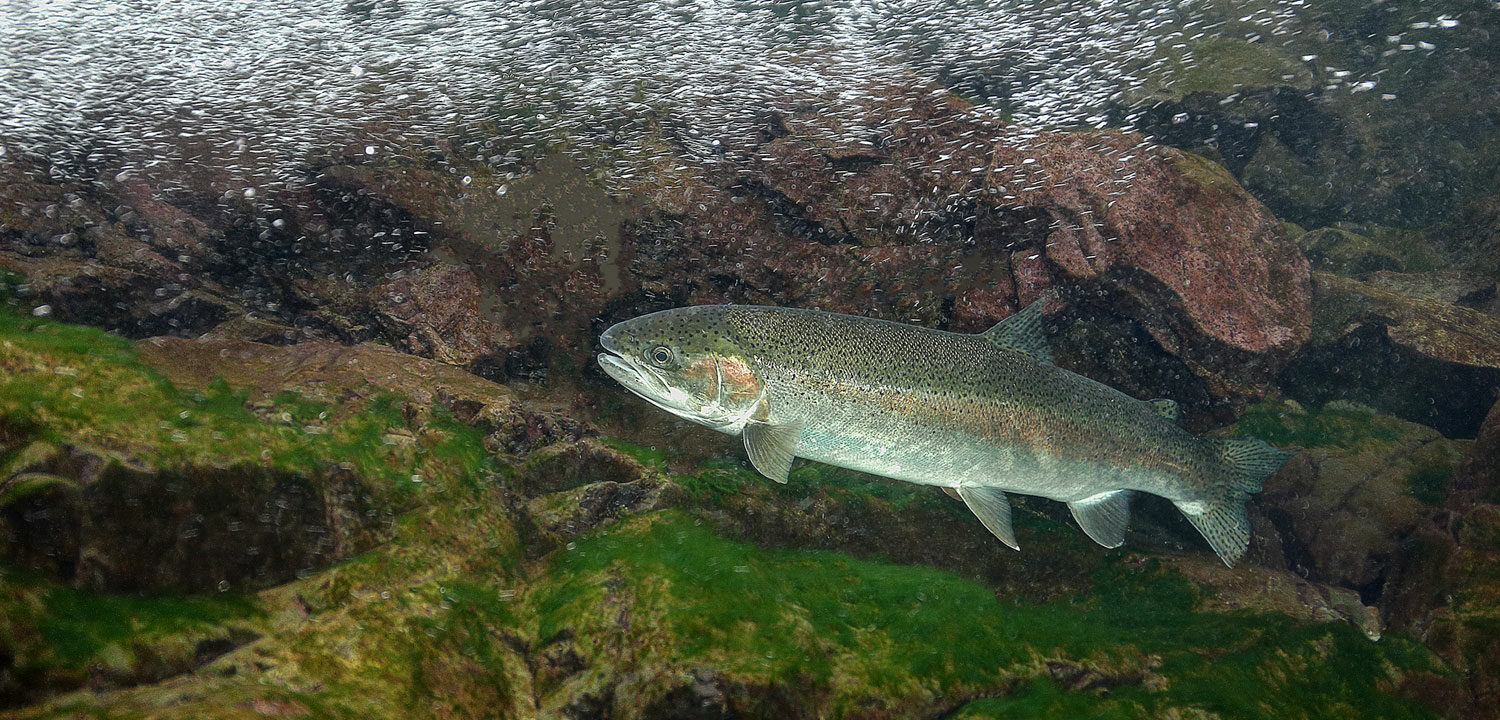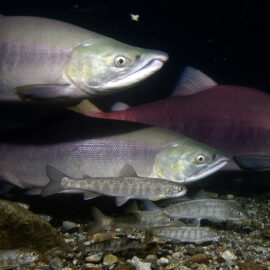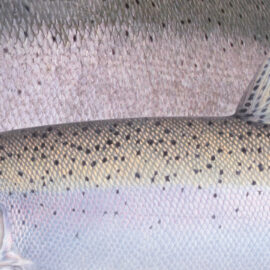Steelhead are the anadromous form of the rainbow trout (Oncorhynchus mykiss). The difference between these forms of the species is that steelhead migrate to the ocean and return to freshwater tributaries to spawn, whereas rainbow trout do not leave freshwater. Steelhead are also larger and returning adults are less colorful than rainbow trout.
Steelhead have the most southerly coastal distribution among Oncorhynchus in the eastern Pacific (learn more about other salmonid species on our Pacific Salmon page); in the west, chum and masu share that distinction. Contemporary studies demonstrate that the anadromous and resident forms interbreed, but we have mapped only the former.
As with our distribution data, risk of extinction data include only the anadromous form of mykiss. Their unusual plasticity of this species and its complex life history diversity would suggest an increased resilience to threats, but they are not immune to extripation. Steelhead exhibit a pattern of risk across the North Pacific similar to that displayed by other salmonids.
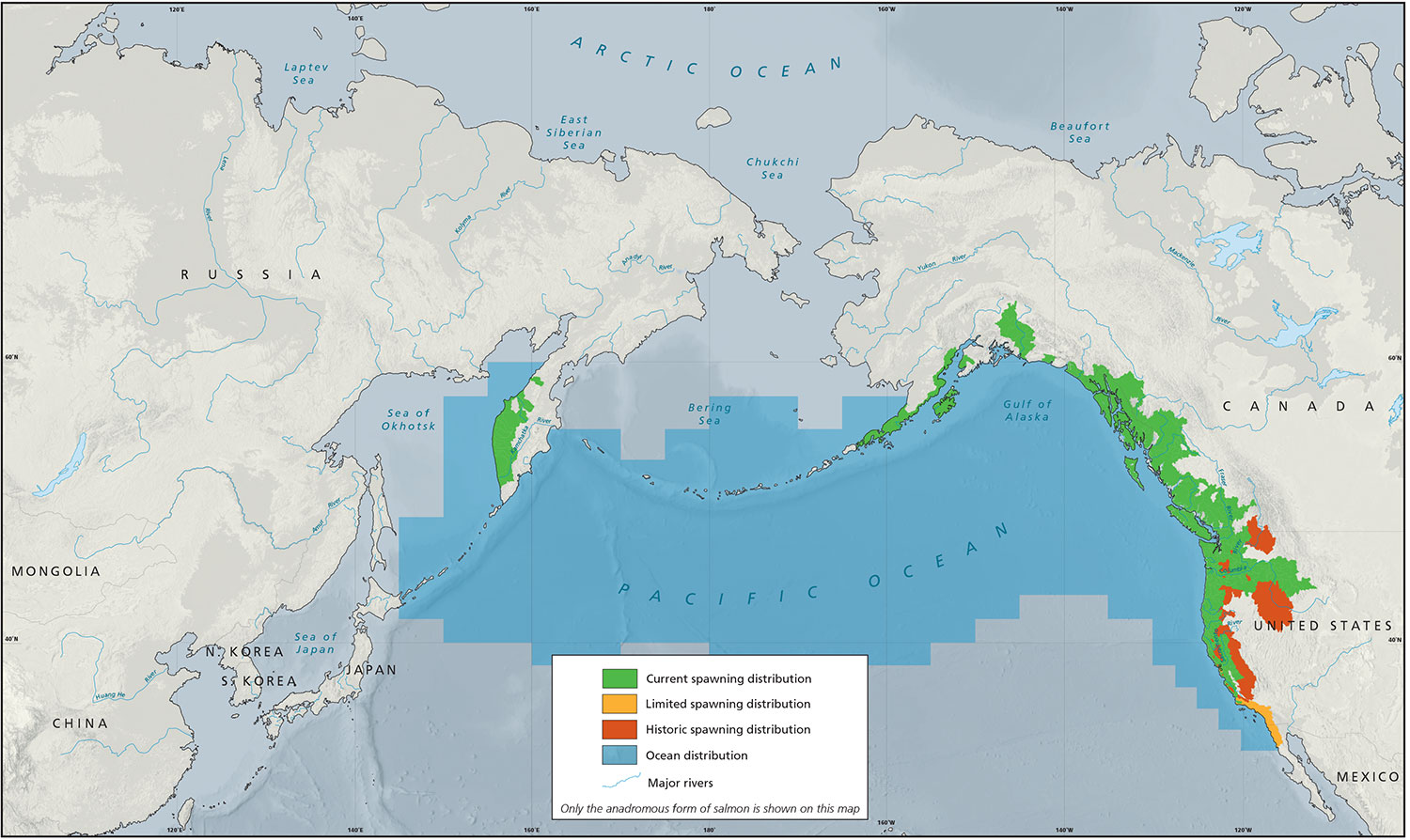
Mykiss may thrive in any number of habitats, from lakes to rivers, from shallow tributaries to estuaries. Kamchatka’s west coast is the only western Pacific region to host steelhead. Steelhead are robust in southeast Alaska and British Columbia but patchy along the Gulf of Alaska. Mykiss have experienced extinctions inland, east of the Coast Ranges and the interior Columbia River basin. Current distribution reaches past Santa Barbara, California. The distributional footprint for the resident form of mykiss—rainbow trout—is more extensive.|
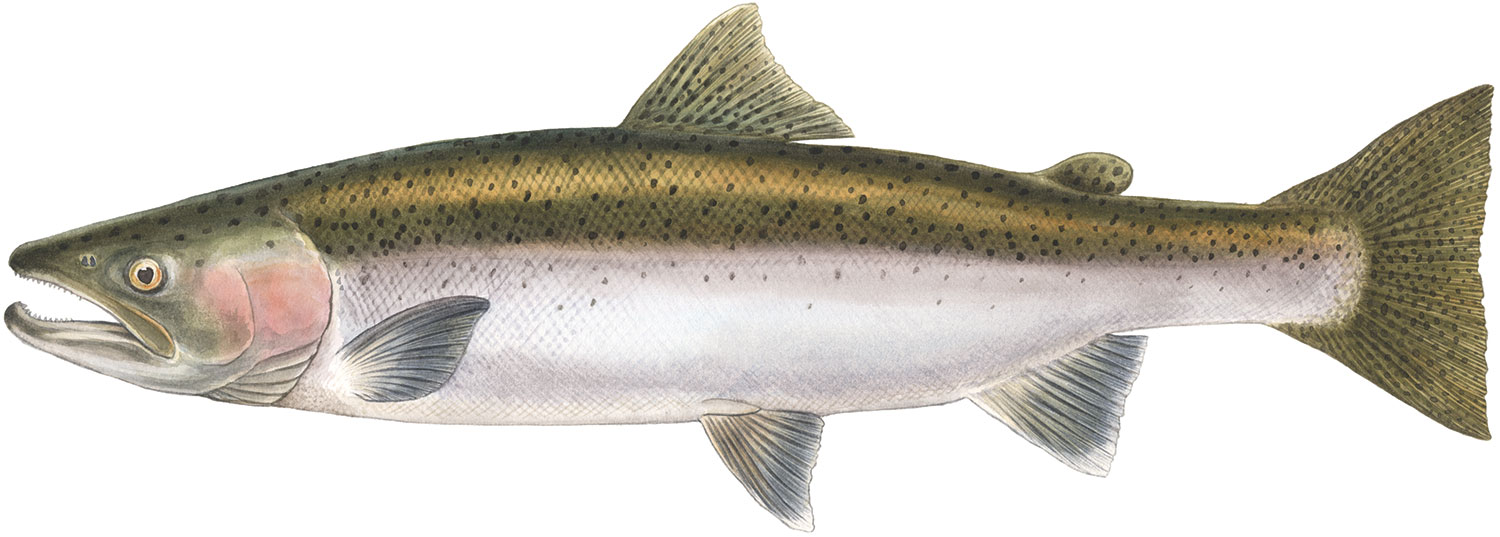
Scientific name
Oncorhynchus mykiss
Abundance
Classification of O. mykiss has been hotly debated for years. Rainbow-steelhead and cutthroat trout were moved from the genus Salmo to Oncorhynchus as a result of analyses from Gerald R. Smith and Ralph Stearley in 1993. Russian biologists refer to steelhead and rainbow trout collectively as “mikizha,” and classify them as Parasalmo rather than Oncorhynchus, largely due to the fact that rainbow-steelhead are repeat spawners and have distinctive morphometric features.
Size
Steelhead vary greatly in size. They can weigh 5 to 20 pounds (2.5 – 9 kg) and measure 24 to 40 inches (60 –100 cm) as adults.
Life history

Unlike other species of Pacific salmon (with the exception of cutthroat and some resident sockeye and masu), steelhead do not necessarily die after spawning and therefore live relatively long lives, from 4 to 7 years or more. Steelhead adapt to a variety of environmental conditions and utilize all parts of a river basin, from small tributary streams to mainstem river channels. Life histories vary widely and include diverse combinations of freshwater, estuarine, and saltwater residence. Kamchatka sockeye populations appear to be particularly diverse, compared to North American populations.
Cultural role
Steelhead were harvested commercially in North America until the 1930s and are still harvested commercially by native peoples under original treaties. In Russia mykiss were harvested commercially until the 1980s. Both the anadromous and resident forms of mykiss are popular with sport fishers in North America and on Kamchatka.
